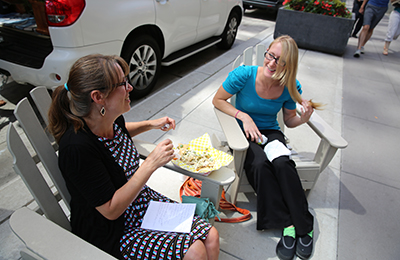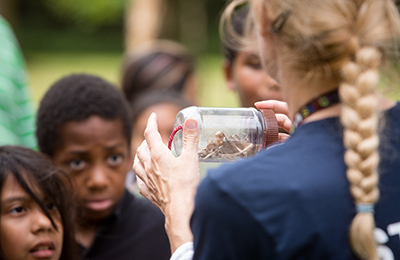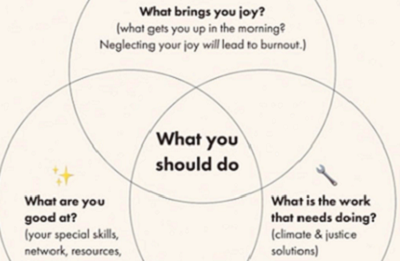Explaining the science of climate change
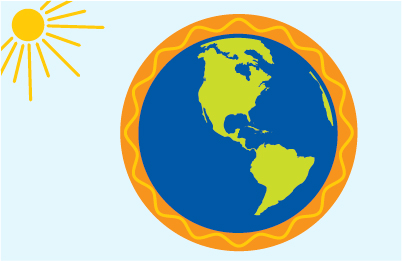 When talking to others about climate change, you may wonder if it’s necessary to have a common, baseline understanding of how climate change works?
When talking to others about climate change, you may wonder if it’s necessary to have a common, baseline understanding of how climate change works?
Research from the Frameworks Institute and others suggests it is helpful to ground science education, communication, and conversations in some basic climate science. When people understand the processes behind the problem, they are less likely to stay stuck on existing political positions and more likely to move into a productive place to think about climate solutions.
But how can you effectively communicate something as complex as climate science? The following metaphors and analogies have proven effective in increasing people’s understanding.
Climate change vs. global warming…or something else
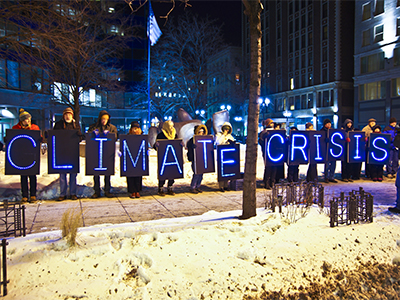 One of the first things to determine when communicating about climate change is what to call the issue in the first place. There are a variety of terms that could be used, and the best term may depend on your audience and what resonates with them.
One of the first things to determine when communicating about climate change is what to call the issue in the first place. There are a variety of terms that could be used, and the best term may depend on your audience and what resonates with them.
The late 2000s saw a shift toward using “climate change” instead of “global warming.” However, there is not a consensus about the best term to use.
Some people say that climate change is a more accurate term to convey the variety of impacts, while others have found that global warming may create more emotional engagement.
More recently, terms like climate emergency, climate crisis, or climate breakdown have been used to convey urgency. Other terms, like damage to the climate, climate disruption, and climate failure, help communicate that this is an issue that people have caused and can work to prevent. These terms work to create tension – that our deeply held goals and values don’t align with our current actions – that is needed to motivate action.
In some cases when climate change is viewed by the audience as polarizing or confusing, talking about environmental damage, economic opportunities, or health and wellbeing of current and future generations may resonate more strongly.
Photo credit: Joe Brusky, Overpass Light Brigade, from flickr.com and used with permission via Creative Commons license 2.0
Metaphors to explain how climate change works
Heat-trapping blanket
 When we burn fossil fuels for energy, the carbon dioxide that is released builds up in our atmosphere and acts like a blanket that traps heat around the world, disrupting the climate.
When we burn fossil fuels for energy, the carbon dioxide that is released builds up in our atmosphere and acts like a blanket that traps heat around the world, disrupting the climate.
The heat-trapping blanket metaphor quickly and effectively helps people understand the basic mechanics of climate change and provides them an easy way to recall it and explain it to others.
Too much carbon
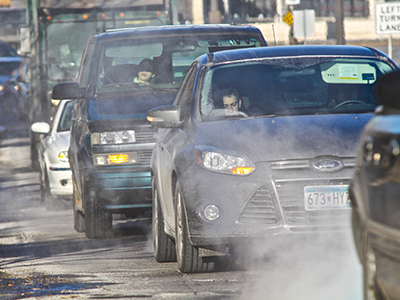 Nature is out of balance. Normal life processes create regular levels of carbon dioxide, but rampant levels of carbon dioxide are produced when we burn fossil fuels for energy. We need to reduce the out-of-control production of carbon dioxide.
Nature is out of balance. Normal life processes create regular levels of carbon dioxide, but rampant levels of carbon dioxide are produced when we burn fossil fuels for energy. We need to reduce the out-of-control production of carbon dioxide.
Explaining that we are putting too much carbon in the atmosphere helps people understand that some carbon is natural and needed, but too much leads to problems. It also helps explain that burning fossil fuels created this problem and that we can address it by reducing the carbon put into the atmosphere.
Ocean as the climate’s heart
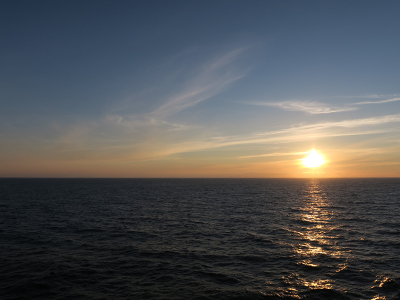 Just as a heart circulates blood and regulates the body’s temperature, the ocean regulates the world’s climate system by controlling the circulation of heat and moisture. Burning fossil fuels damages the ocean’s ability to maintain good circulation of heat and moisture, impacting its ability to keep the climate stable. So sometimes the oceans pump too much heat and moisture through the system, contributing to strong storms and hurricanes, or sometimes too little, contributing to drought.
Just as a heart circulates blood and regulates the body’s temperature, the ocean regulates the world’s climate system by controlling the circulation of heat and moisture. Burning fossil fuels damages the ocean’s ability to maintain good circulation of heat and moisture, impacting its ability to keep the climate stable. So sometimes the oceans pump too much heat and moisture through the system, contributing to strong storms and hurricanes, or sometimes too little, contributing to drought.
The ocean plays a vital role in regulating the climate system, but because people generally understand little about the ocean, this can be a difficult connection to comprehend. Relating the ocean’s role in the climate system and the impact of climate change on the oceans to processes in our own bodies can help increase that understanding.
Climate as the foundation of our lives
Climate is the foundation of our lives, the ground under our feet. Climate change is the ground shifting under our feet. Our lives, including water supplies, agriculture, and where we build our homes, depend on a stable climate. Weather patterns affect everything in our lives, including our capacity to grow food, the diseases and pests we have to deal with, and our health and safety.
Beyond knowing the basics of how climate change works, people need to see themselves in the issue and understand the implications for themselves and the people they know. Explaining that a healthy climate is the foundation of everything we depend on helps people understand the urgency and severity of climate change.
The energy-climate change connection
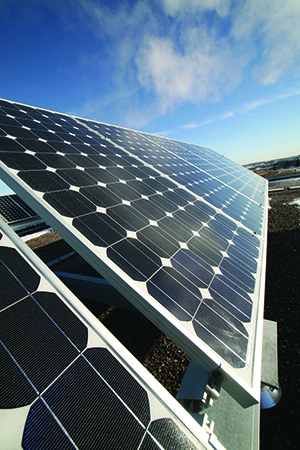 We need to move away from dirty, outdated fuels, such as gas and oil, toward clean, homegrown energy sources like solar and wind. By using energy sources that don’t create carbon dioxide and add to the heat-trapping blanket effect, we can get the climate system back to functioning the way it should.
We need to move away from dirty, outdated fuels, such as gas and oil, toward clean, homegrown energy sources like solar and wind. By using energy sources that don’t create carbon dioxide and add to the heat-trapping blanket effect, we can get the climate system back to functioning the way it should.
While we work on moving away from dirty, outdated fuels like gas and oil, we can make changes to use less of the kinds of energy that add heat-trapping gases to our atmosphere.
Explaining the relationship between energy production, consumption, and climate change is important since not everyone automatically makes this connection. Talk about both shifting to new sources of energy and making changes to use less energy.
Communicating the scientific consensus and confronting misinformation
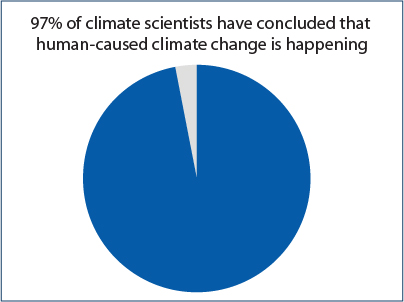 97% of climate scientists have concluded that human-caused climate change is happening.
97% of climate scientists have concluded that human-caused climate change is happening.
Many people think there is more uncertainty about climate change among scientists that there really is. Deliberate misinformation campaigns have heightened the public’s confusion.
Communicating the scientific consensus on climate change can increase other key beliefs about the issue – including that climate change is happening, human-caused, and a worrisome threat. These beliefs help inoculate the public against misinformation and inspire action.
How to communicate the scientific consensus and confront misinformation:
- Use simple pie charts or descriptive sentences, such as “97% of climate scientists have concluded that human-caused climate change is happening.” Short, sticky messages are most effective for relatively simple concepts.
- Help people understand the role that disinformation campaigns seek to play and how to identify the approaches misinformation campaigns play. Explain that politically or economically motivated actors may seek to undermine the findings of climate science. Acknowledge that misinformation campaigns have amplified the inherent uncertainty of science, cast doubt on the scientific consensus, and increased polarization.
- Repeat your messages to get them to resonate and increase understanding.
Resources
The following resources informed this article. You can use them as resources to explain climate science:
- Tested tools for making climate communications clearer and more effective (PDF) from the Frameworks Institute and the National Network for Ocean and Climate Change Interpretation
- Yale Program on Climate Communication
- EcoAmerica research and reports
- Climate Communications and Behavior Change (PDF) from the Climate Leadership Initiative
- The Psychology of Climate Change Communication from the Center for Research on Environmental Decisions
- The Essential Principles of Climate Literacy from climate.gov
